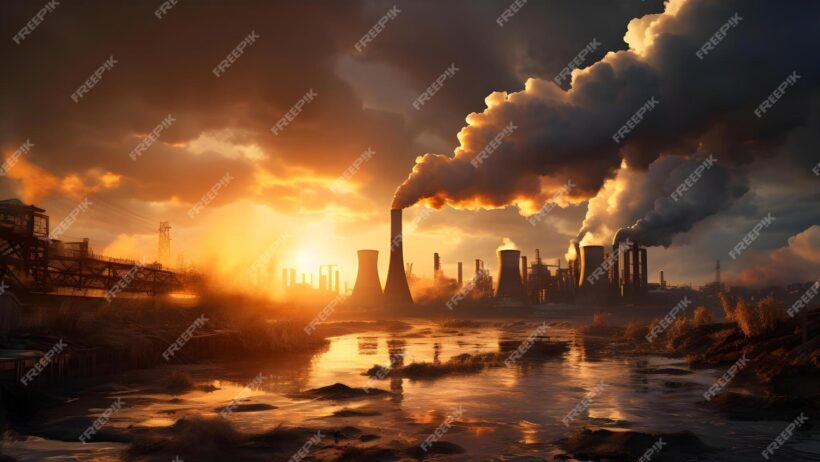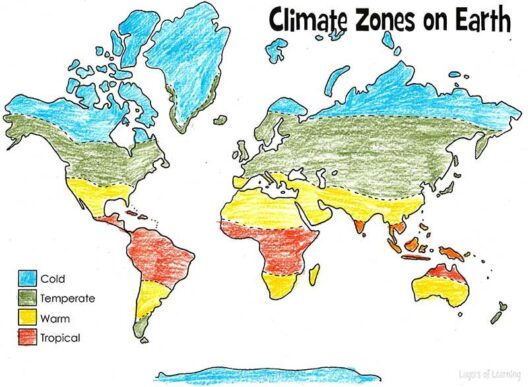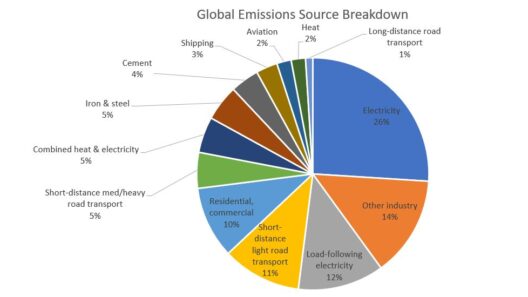The planet’s atmosphere resembles a finely tuned organism, where each element plays a critical role in maintaining the delicate balance of life. Among the many contributors to this ecosystem, thermal power plants and oil sands stand out as formidable forces, exerting profound influence over global warming. Their operations mirror a double-edged sword, providing energy to sustain modern civilization while simultaneously exacerbating the climate crisis through their substantial carbon footprints.
At the heart of the electrifying chaos generated by thermal power plants is coal, a quintessential symbol of human ingenuity harnessed for energy. These plants operate on the principle of converting heat energy—typically from burning fossil fuels—into electricity. The combustion of coal is akin to lighting a pyre of ancient flora, releasing not only energy but also an array of greenhouse gases into the atmosphere. The smokestacks become sentinels, tirelessly exuding torrents of carbon dioxide (CO2), methane (CH4), and nitrous oxide (N2O), each a potent agent in the baleful dance of climate change.
Coal-fired thermal power plants are notorious for their inefficiency. On average, only about 33% of the energy from burning coal is converted to electricity, with the remainder dissipating as waste heat. This inefficiency is tantamount to pouring gasoline into a vehicle with a punctured fuel tank—energy escapes before it can perform its intended function. Consequently, for every kilowatt-hour of electricity generated, a significant volume of greenhouse gases is released into the ether, contributing to the steady rise in global temperatures.
Transitioning to oil sands further compounds the climate predicament. These viscous deposits of bitumen are often likened to molasses, thick and stubborn. Extracting oil from these sands requires immense energy, essentially transforming raw earth into a liquid fuel. The process involves mining operations that strip away large swathes of forest, disrupt ecosystems, and release carbon into the atmosphere. Furthermore, the extraction and refining processes are energy-intensive, contributing additional greenhouse gases to the climate arsenal.
The lifecycle of oil production from sands reveals a stark reality. From the initial extraction to combustion in vehicles, oil sands emit up to three times more CO2 per barrel than conventional oil. Furthermore, the environmental ramifications ripple through both land and water. Toxic tailings ponds, expansive lakes of chemical residue, serve as a monument to the cost of such energy production. Wildlife is displaced, and water sources are polluted, revealing a tragic irony: the quest for energy surges forward, while ecological health recedes.
Moreover, the wider implications of thermal power plants and oil sands reach beyond their immediate environmental impacts. Their carbon footprints have far-reaching consequences that manifest in increasingly erratic weather patterns, rising sea levels, and dwindling biodiversity. Scientists often use evocative imagery to depict these changes — the melting glaciers as the tears of the Earth, the extinction of species likened to pages torn from a treasured book of life. Each element of the ecosystem is inextricably linked; the alteration of one thread can unravel the entire tapestry of existence.
Amidst this environmental turmoil, opposing forces continue to advocate for a transition toward renewable energy sources. Solar, wind, and hydroelectric power offer a glimmer of hope, presenting an opportunity to diminish the carbon footprint generated by thermal power plants and oil sands. By harnessing the earth’s natural systems, humanity can initiate a renaissance of energy production that harmonizes with the planet rather than exploiting it. Similar to a symphony, where each instrument contributes to a harmonious whole, integrating diverse renewable sources can compose a melody of sustainability.
However, the transition to renewable energy is fraught with challenges. The path is bedecked with financial and political hurdles, echoing the concerns about job loss in traditional energy sectors. Yet, investing in green technology and energy infrastructure presents not only an opportunity to drive down emissions but also to foster new job markets. Retraining workers from fossil fuel industries for roles in clean energy can fortify economies and provide a sense of purpose as the world steps into a new era.
While thermal power plants and oil sands currently play a significant role in the global energy landscape, their impact on global warming cannot be overstated. The carbon emissions resulting from their operations are akin to a relentless drumbeat—a persistent reminder of humanity’s dependency on fossil fuels. As the world increasingly grasps the implications of climate change, it is essential to hold these entities accountable and advocate for transparency in their operations.
In summary, the intricate relationship between thermal power plants, oil sands, and global warming underscores an urgent call for action. Energy’s carbon footprint, shaped by these industries, contributes significantly to the climate crisis that looms ominously over humanity’s future. By choosing a path toward renewable energy, society can transform the narrative from one of destruction to one of rejuvenation. It is time to rewrite the story of energy, cultivating a relationship with the planet that respects and nurtures the delicate balance that sustains life. The future is unwritten, waiting to be forged by collective intent and innovative solutions.








